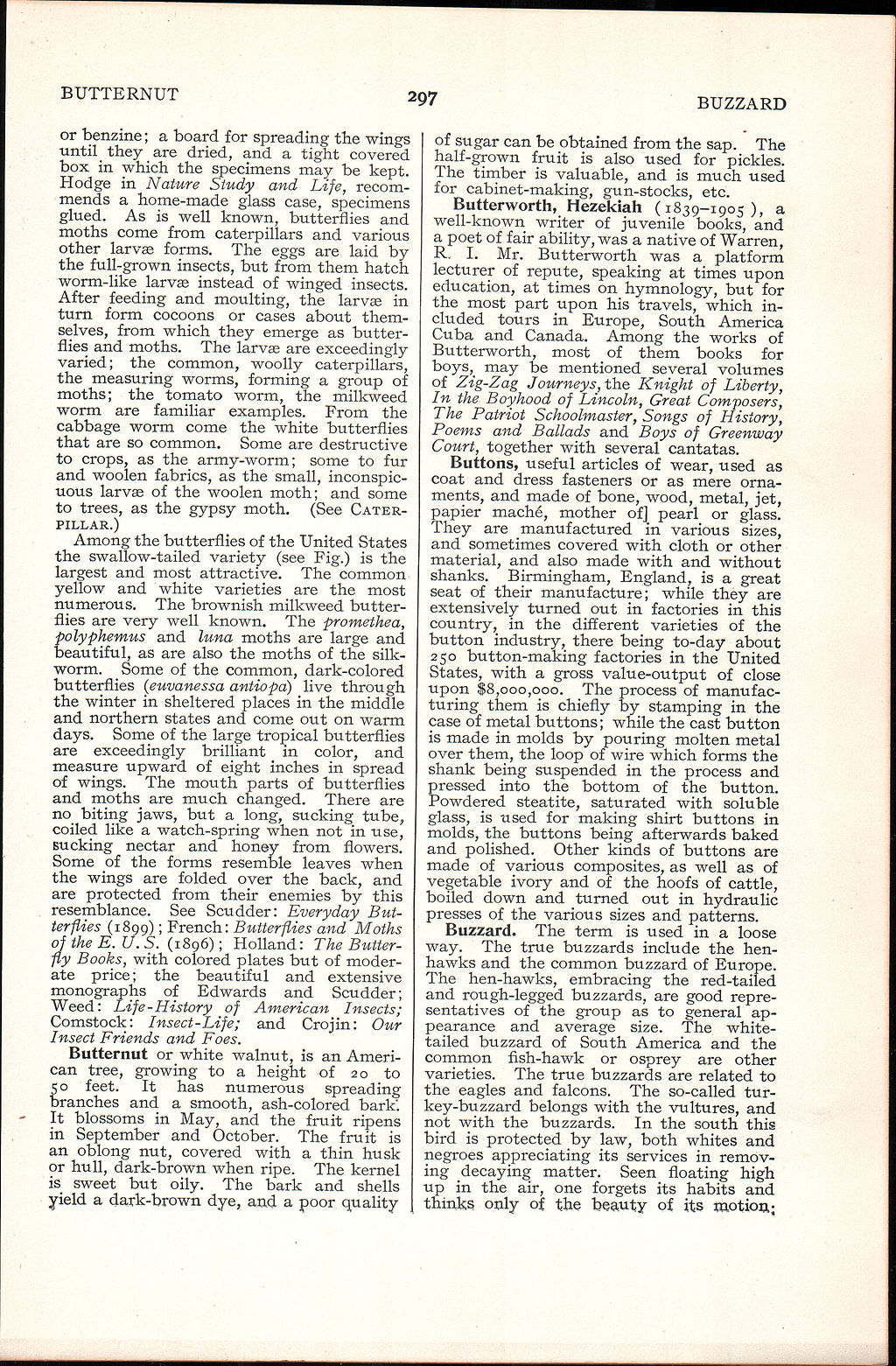Page 297 : BUTTERNUT — BUZZARD
Individual articles:
or benzine; a board for spreading the wings until they are dried, and a tight covered box in which the specimens may be kept. Hodge in Nature Study and Life, recommends a home-made glass case, specimens glued. As is well known, butterflies and moths come from caterpillars and various other larvæ forms. The eggs are laid by the full-grown insects, but from them hatch worm-like larvæ instead of winged insects. After feeding and moulting, the larvæ in turn form cocoons or cases about themselves, from which they emerge as butterflies and moths. The larvæ are exceedingly varied; the common, woolly caterpillars, the measuring worms, forming a group of moths; the tomato worm, the milkweed worm are familiar examples. From the cabbage worm come the white butterflies that are so common. Some are destructive to crops, as the army-worm; some to fur and woolen fabrics, as the small, inconspicuous larvae of the woolen moth; and some to trees, as the gypsy moth. (See Caterpillar.)
Among the butterflies of the United States the swallow-tailed variety (see Fig.) is the largest and most attractive. The common yellow and white varieties are the most numerous. The brownish milkweed butterflies are very well known. The promethea, polyphemus and luna moths are large and beautiful, as are also the moths of the silkworm. Some of the common, dark-colored butterflies (euvanessa antiopa) live through the winter in sheltered places in the middle and northern states and come out on warm days. Some of the large tropical butterflies are exceedingly brilliant in color, and measure upward of eight inches in spread of wings. The mouth parts of butterflies and moths are much changed. There are no biting jaws, but a long, sucking tube, coiled like a watch-spring when not in use, sucking nectar and honey from flowers. Some of the forms resemble leaves when the wings are folded over the back, and are protected from their enemies by this resemblance. See Scudder: Everyday Butterflies (1899); French: Butterflies and Moths of the E. U. S. (1896); Holland: The Butterfly Books, with colored plates but of moderate price; the beautiful and extensive monographs of Edwards and Scudder; Weed: Life-History of American Insects; Comstock: Insect-Life; and Crojin: Our Insect Friends and Foes.
Butternut or white walnut, is an American tree, growing to a height of 20 to 50 feet. It has numerous spreading branches and a smooth, ash-colored bark. It blossoms in May, and the fruit ripens in September and October. The fruit is an oblong nut, covered with a thin husk or hull, dark-brown when ripe. The kernel is sweet but oily. The bark and shells yield a dark-brown dye, and a poor quality of sugar can be obtained from the sap. The half-grown fruit is also used for pickles. The timber is valuable, and is much used for cabinet-making, gun-stocks, etc.
... (moved) ...
